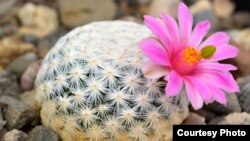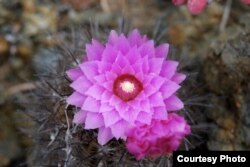Cacti are among the world’s most threatened species, even more so than mammals and birds, according to the first ever global assessment.
Native to arid parts of the Americas, Cacti have also been introduced to Africa, Australia and Europe. But the new research show that that 31 percent are threatened with extinction
According to Barbara Goettsch, a scientist with the International Union for the Conservation of Nature (IUCN) and co-lead author of the Global Cactus Assessment, prior to this work only 160 of the nearly 1,500 cacti had been studied.
“Now we have a complete picture,” she said. “And cacti are under increasing pressure from human activity, including illegal trade, which was much greater than we previously thought.”
While an international convention prohibits the harvest of certain plants, Goettsch says that many are nonetheless prized by collectors.
“They have amazing flowers and they have very unique form," she said. "There is a horticultural market outside the country of origin.”
'Illegal trafficking, unscrupulous collectors'
Goettsch adds that while cacti can be grown legally, illegal trafficking – driven by “the unscrupulous collection of live plants and seeds for horticultural trade and for private ornamental collections” – threatens more species than the iconic rhinos and elephants.
Other threats include the destruction of habitat with small livestock and farm operations, residential and commercial development, quarrying and aquaculture.
Next step: conservation
“Knowing what is affecting each species and where, you can actually plan conservation action,” Goettsch said. “So, for example, you would look at very different things to do in southern Brazil, where most of the threatened species are affected by Eucalyptus plantations, than for Peru, where species are mainly impacted by illegal trade for international markets.”
Cacti are key components for biodiversity and critical to the survival of wildlife in arid lands, providing an important source of water and nutrients. They are also gathered by local communities. “If we care about the planet, we need to care about arid lands as well,” Goettsch says.
The Global Cactus Assessment is described in the journal Nature Plants.







